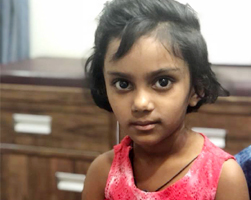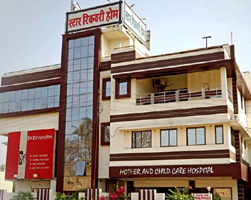- Safely born #3 loops of cord around the neck. Proud team of SRH.
- Case of Pleural Effusion chest tube insertion done. Now child is relived. Proud of team work.
- Serum Bilirubin : 36
Feeling Happy on Saving the Quality of life by Exchange Transfusion procedure of Swarnima - 3 days old having Serum Bilirubin :36 on admission. I think this is my 50th procedure & all babies are doing well. - Dr. Sourabh Choudhary
What is Bilirubin?
Bilirubin is a bile pigment that is orange-yellow in color. It is formed during the normal breakdown of red blood cells (hemoglobin), and is excreted in the bile. Bilirubin can be classified as indirect (free or unconjugated) while it is circulating and is considered as direct after conjugation in the liver with glucuronic acid.
What do high bilirubin levels in a newborn mean?
High bilirubin levels in a newborn usually is the result of unconjugated bilirubin, and is not a major problem for many newborns because they soon metabolize the unconjugated bilirubin normally. These neonates usually clear jaundice within a week. However, very high unconjugated bilirubin levels over time (weeks) can be neurotoxic and can even cause death or lifelong neurological problems (kernicterus) in those who survive. Newborn jaundice may be the result of an underlying problem, for example:
- A family history of Gilbert syndrome
- Genetic problems
- Birth trauma
- Maternal drug intake
- Viral infection or a problem with bleeding
- Liver and/or bile function
- Kawasaki Disease
Another Feather in Hat for Team SRH Followup Beaming Smile of Sanya recovered fully from Rare Disorder Kawasaki Disease. Thanks to her parents for believing in us.
- GBS - Gullien Barre Syndrome
Many cases of GBS timely diagnose at our hospital and fortunately fully recovered from disorder without any complecation and sequelae.
- Scorpion Bite and Poisoning
Many children with scorpion bites were saved in the hospital with timely intensive care management.
Organo Phosphorous Poisoning, Karosene, Turpentine and other accidental poisonings cases are well managed in our PICU.
- Normal delivery in twin pragnency.
- Vaginal normal delivery after caesarean section.
- Managment of high risk pragnencies like advanced maternal age, hypertension, gestational diabetes, anaemia, abnormal presentation, eclampsia, epilepsy.
- Peterm deliveries and intensive management of the preterm baby. As less as 900gm birth weight baby saved at our hospital.
- Successful management of antenatal patient with thyrotoxicosis who was on PTU.
- Proper management of antenatal patient with myesthenia gravis.
- Meningitis case, Tuberular Meningitis, Viral Meningitis(HSV)
- Sr Bilirubin 31
One more Uneventful Exchange Blood Transfusion of Neonate 2 days (Aadvay Dubey) having Sr Bilirubin 31 on admission & now 19 . Congratulation Team SRH .
- Kawasaki Disease
2nd case of Kawasaki Disease admitted on 13th May child Avanti Patel age 2 year. She is better now. Early diagnosis is important.





























